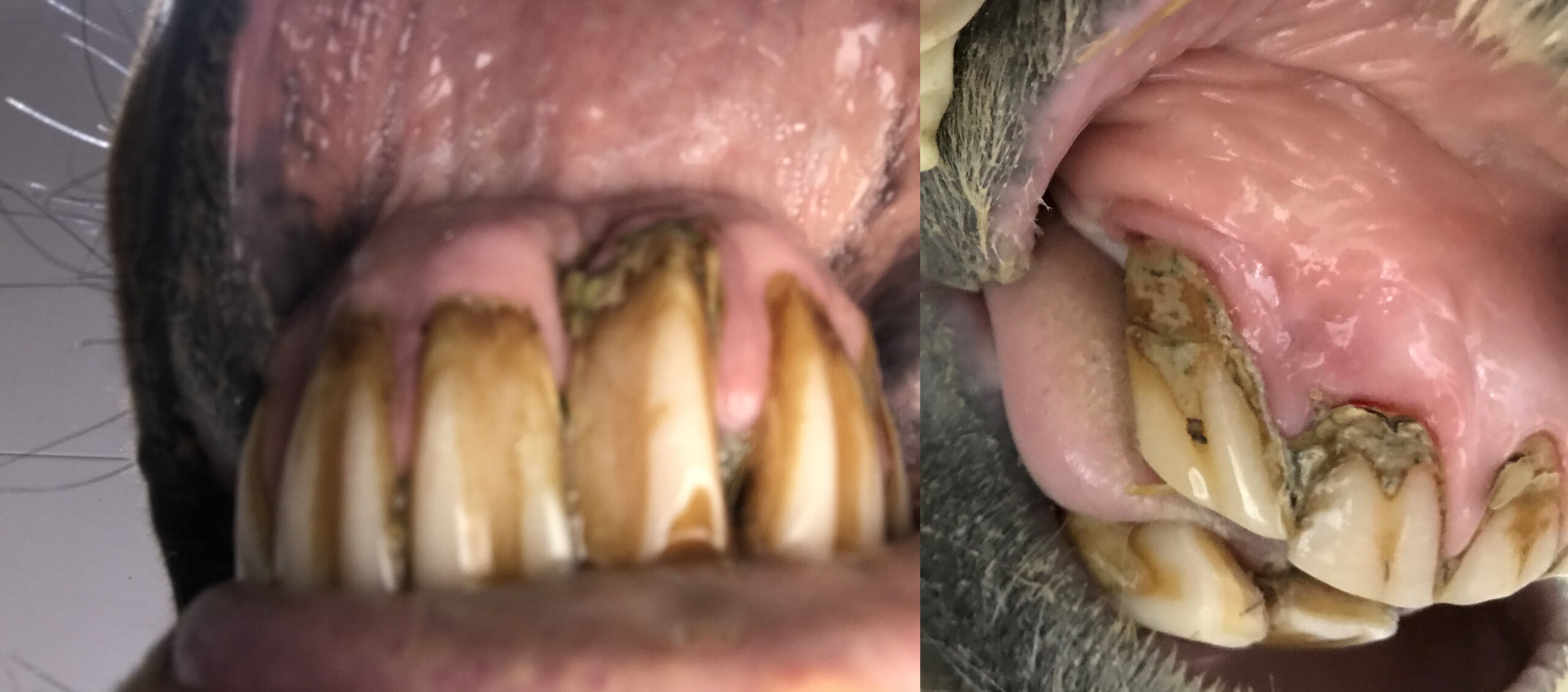What is EOTRH syndrome?
Equine Odontoclastic Tooth Resorption and Hypercementosis, also known as EOTRH, is a syndrome in horses that results in resorptive lesions of the incisors and sometimes canine teeth, so the tooth roots literally ‘dissolve’. It is usually gradual in onset, though often isn’t diagnosed until quite extensive lesions are present. Most commonly it is a condition of older horses (15+), though we have seen it in horses as young as 12.
While this syndrome has probably existed for many years, it has only recently been properly identified and named. Most of the changes take place in the roots making it difficult to visualize, so diagnosis is usually confirmed with radiographs which show the changes in the bone and the tooth roots. This is the only way to know definitively how many teeth are affected, and how severe the lesions are. We currently do not know the underlying cause for the syndrome. The treatment for affected teeth is extraction.
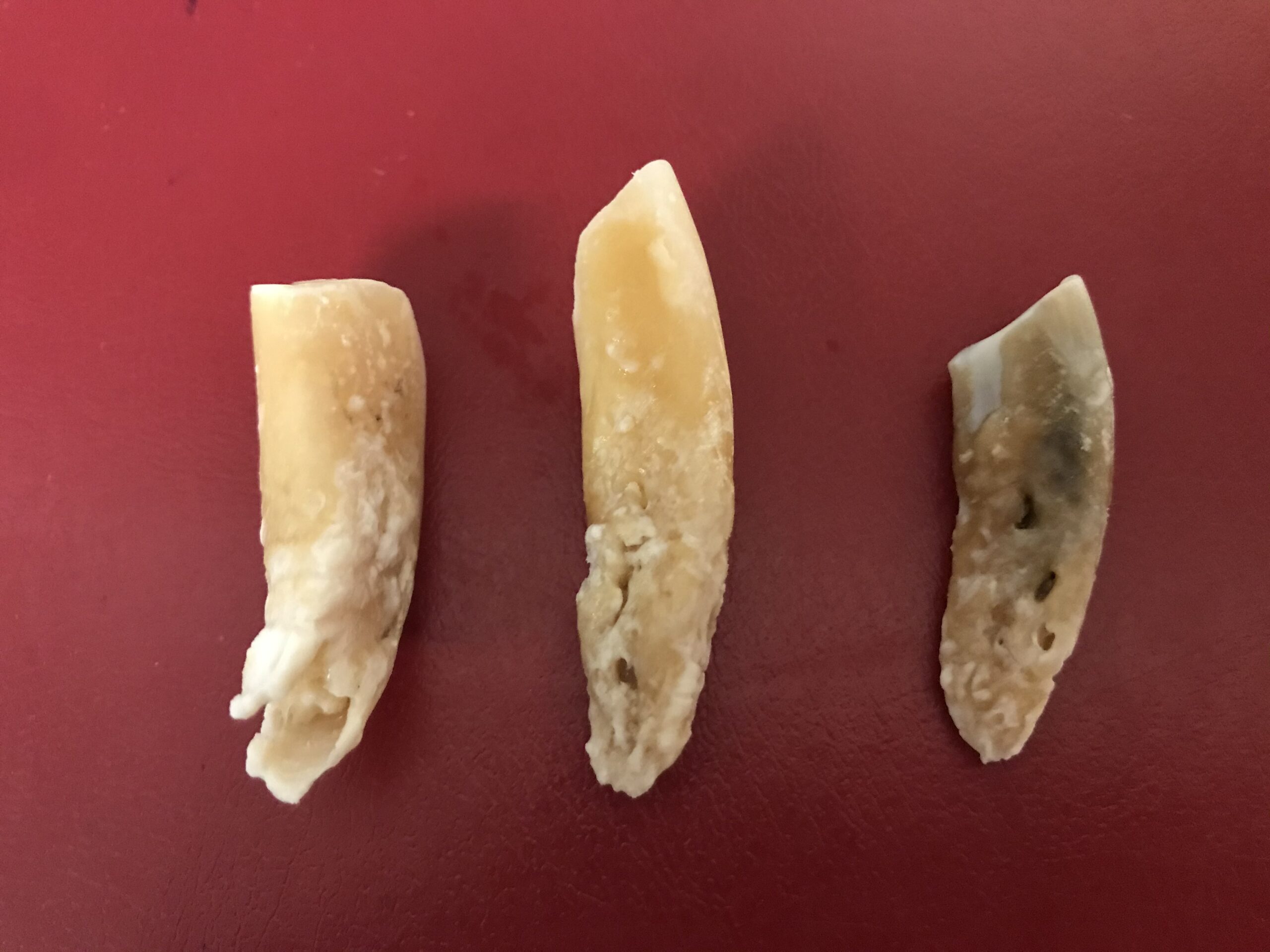
Examples of diseased incisors we have extracted; notice discolouration, irregular pitted surface (and tooth on left – root has partially dissolved / resorbed)
As the disease progresses, the roots of the incisors (and sometimes canines) start to resorb, or basically dissolve. This is an inflammatory process. Some horses also develop hypercementosis, which is an excessive buildup of cementum (calcified tissue) on the roots of one or more teeth. This process can give the appearance of bulb-like swellings around the roots of the affected teeth, this can be seen on radiographs. Unfortunately, as the disease progresses affected teeth eventually start to loosen and become painful. As further resorption occurs, some horses may even fracture off weakened teeth. Many of these teeth become infected as well, as the roots continue to degrade. This can sometimes present with small red “dots” visible above the gum line of the incisors, or even small pimple-like draining tracts in this same area.
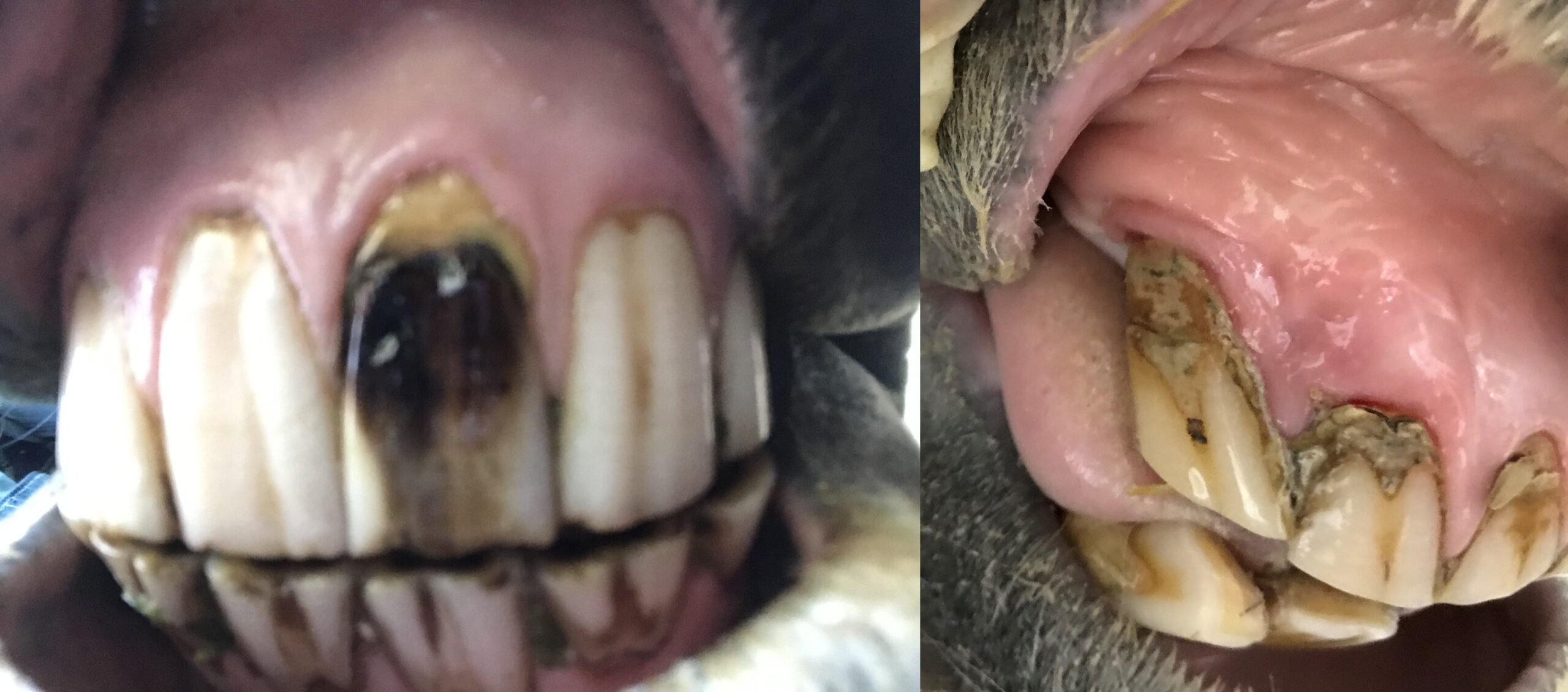
Several examples of EOTRH, note red gum around diseased root; sometimes it forms a thickened gum rim around the tooth as the gum receeds. Often there is an excessive build up of tartar or cement (yellowy stuff). Often teeth fracture or are lost.
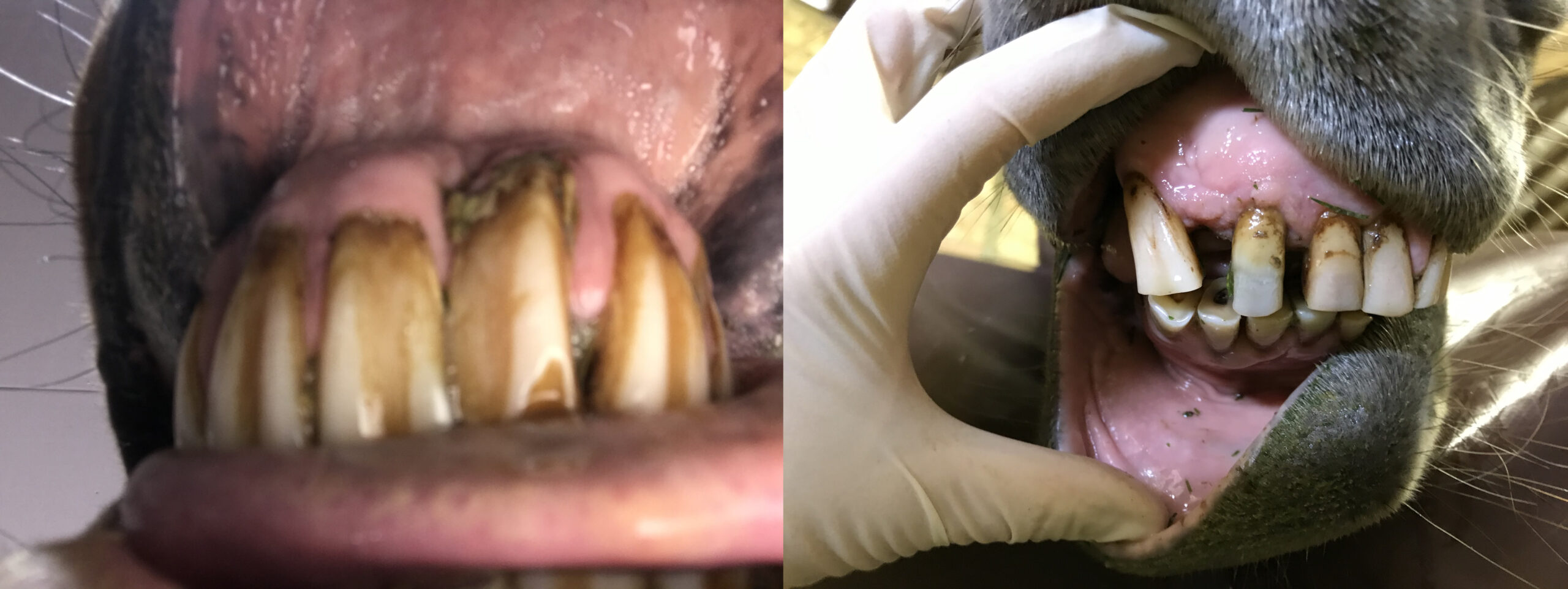
Many older horses are fairly stoic, and rarely exhibit obvious outward signs of oral pain until the clinical disease is quite progressed. Some horses will start to refuse biting down on treats or carrots, and some will quit grazing due to pain in their incisors. As severe changes occur, these horses can start to lose weight and go off feed. As the disease becomes advanced, some horses may exhibit irritable behaviours when being bridled or ridden. In our experience, horses that are diagnosed and treated earlier on will have better outcomes regardless of how many incisors have to be extracted. It is also interesting to note that many horses bounce back tenfold after extraction of these teeth, even those that end up having all of their incisors extracted at once. Sometimes owners don’t realize there was a painful component to the disease, the horses become much more bright, happy, and personable after the extractions.
The disease progresses slowly over many years. Noticing changes in behaviour and eating habits can be difficult. Watch for unexplained weight loss, refusal to bite into apples or carrots, overall grumpy demeanor, or no longer accepting of a bit.
Radiographs show the extent of tooth root and bone disease.
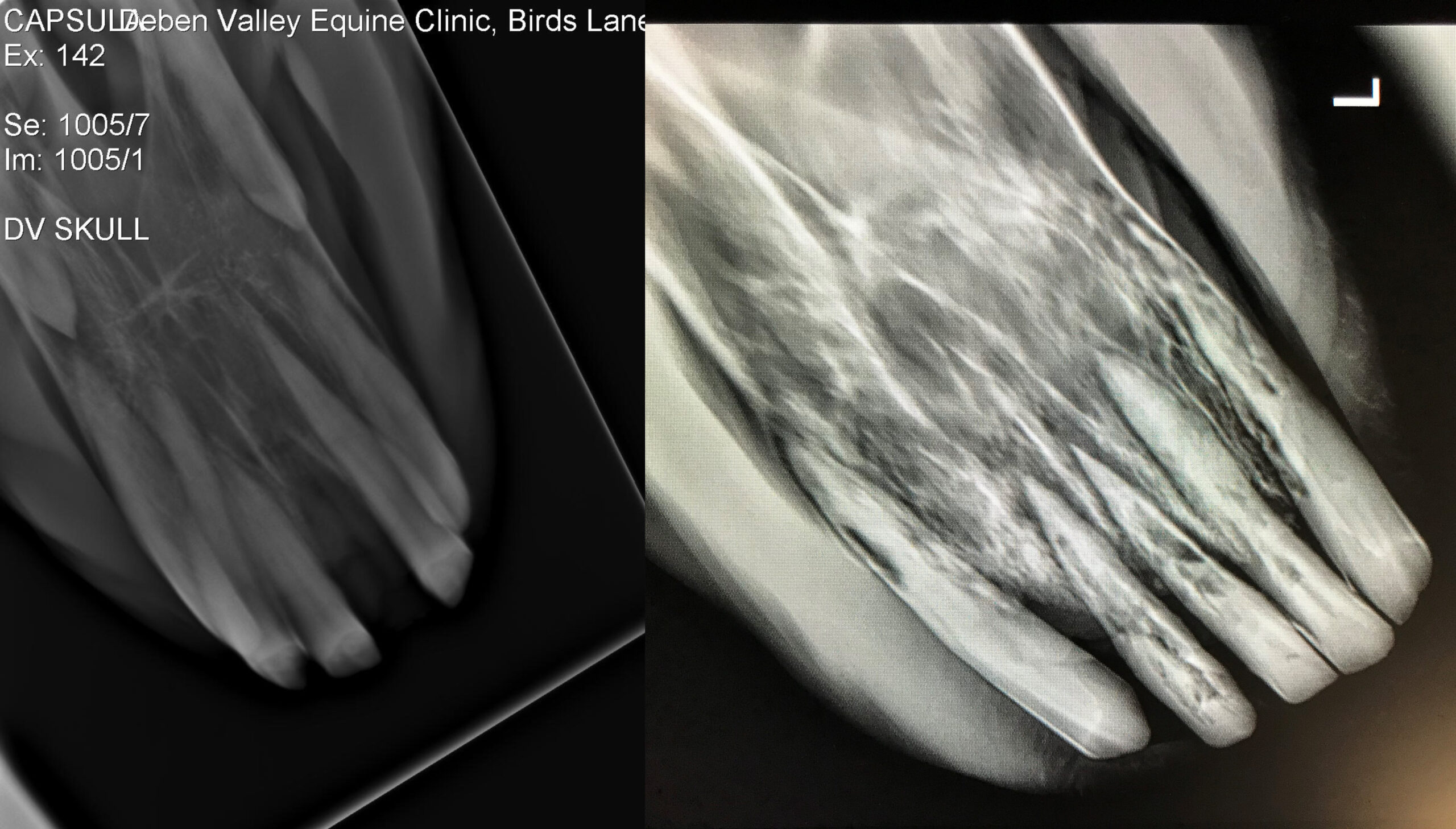
Upper jaw (maxilla) after an incisor extraction, but note how regular the bone around the tooth roots are compared to EOTRH case on the right.
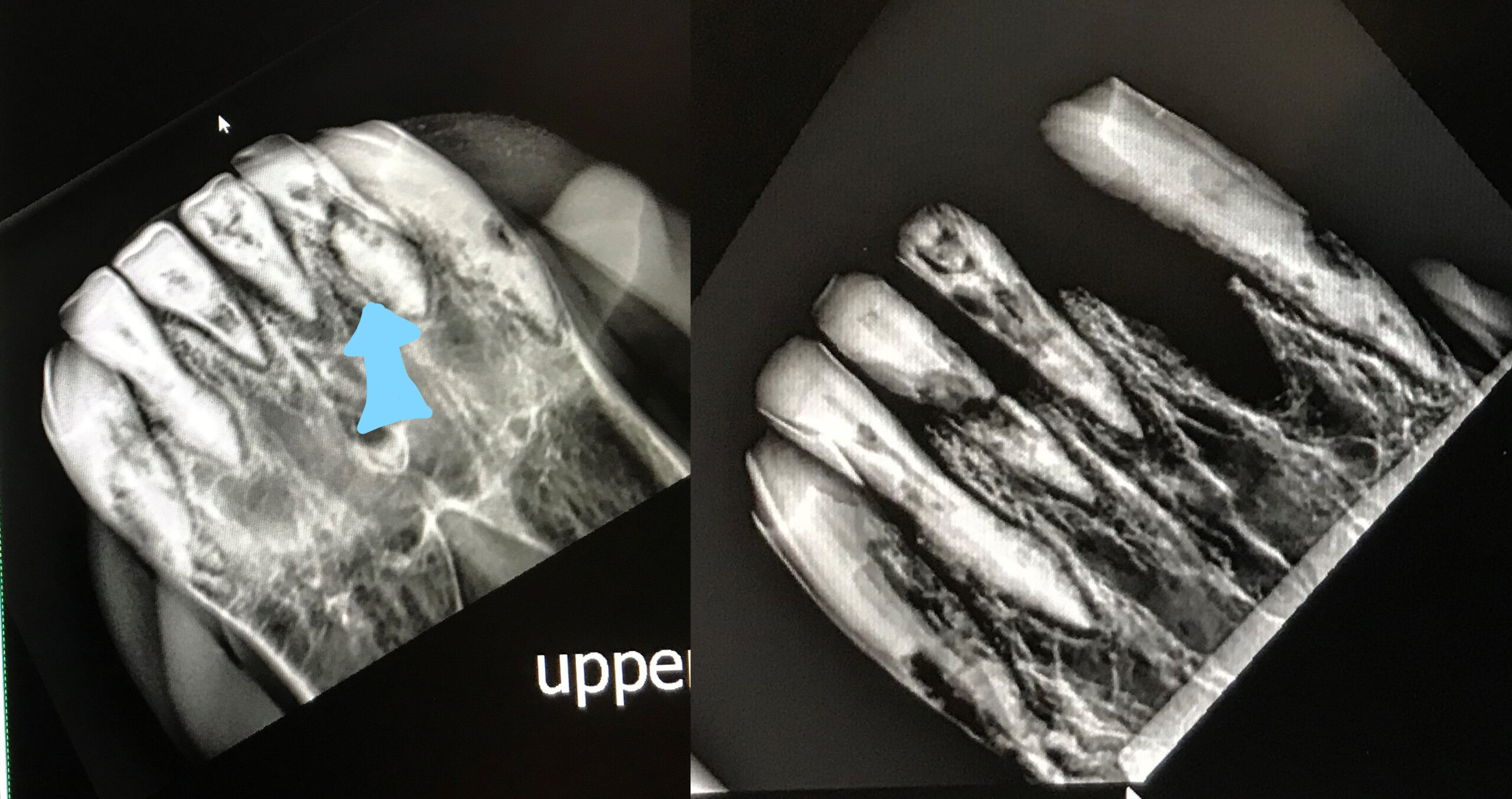
Radiographs showing abnormal tooth roots (pale blue arrow points to fractured tooth) surrounded by irregular bone. Radiograph on the right shows after one extraction, but other teeth will need extracting too.
Cementum also forms on the teeth near the gums and may be confused as tartar. Extracting the affected teeth is the only way to resolve the discomfort. The number of teeth that should be extracted is entirely related to the stage of disease when the diagnosis is made. Both the top and the bottom incisors can be involved.
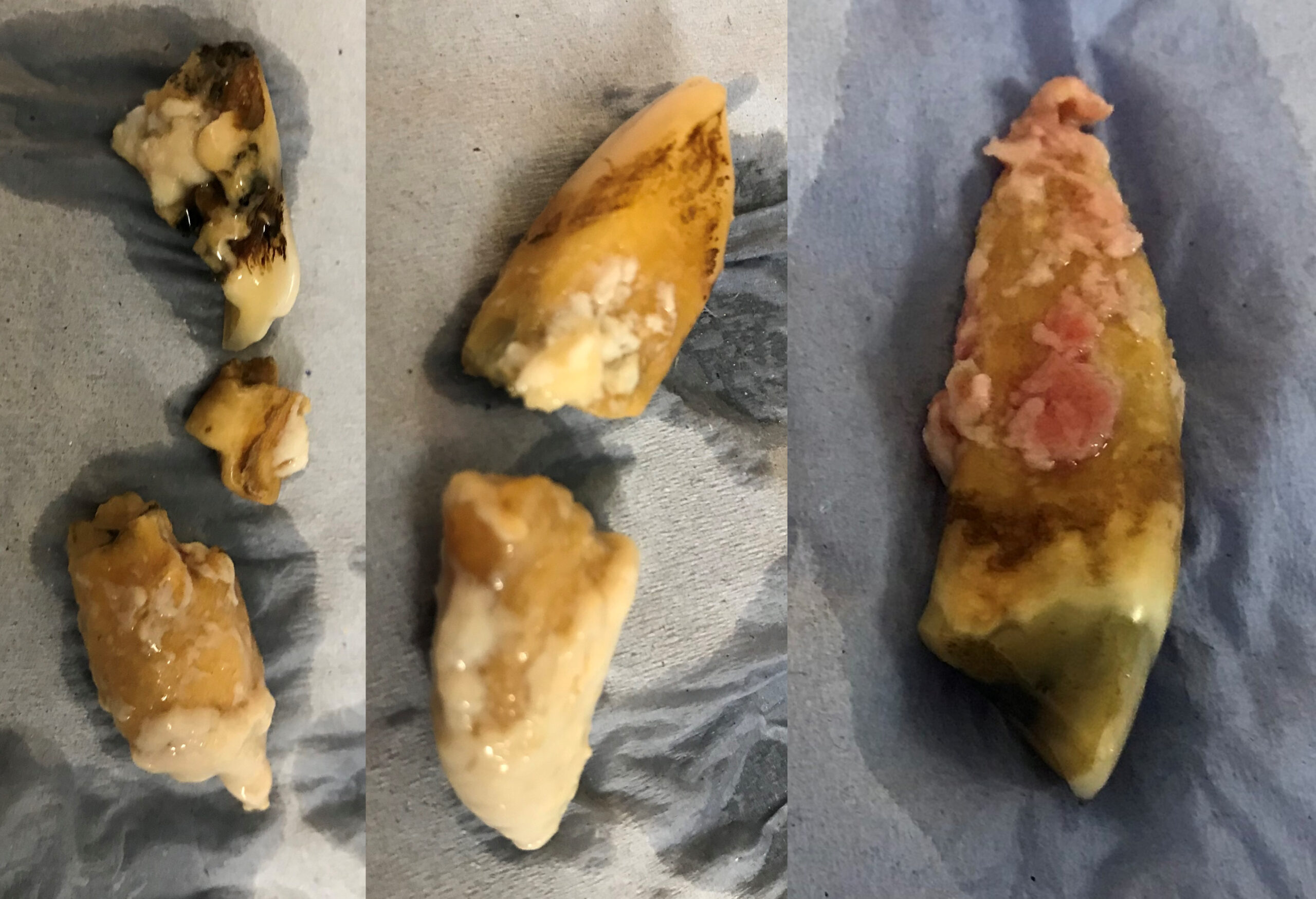
Examples of extracted diseased incisor teeth
Immediately post extraction
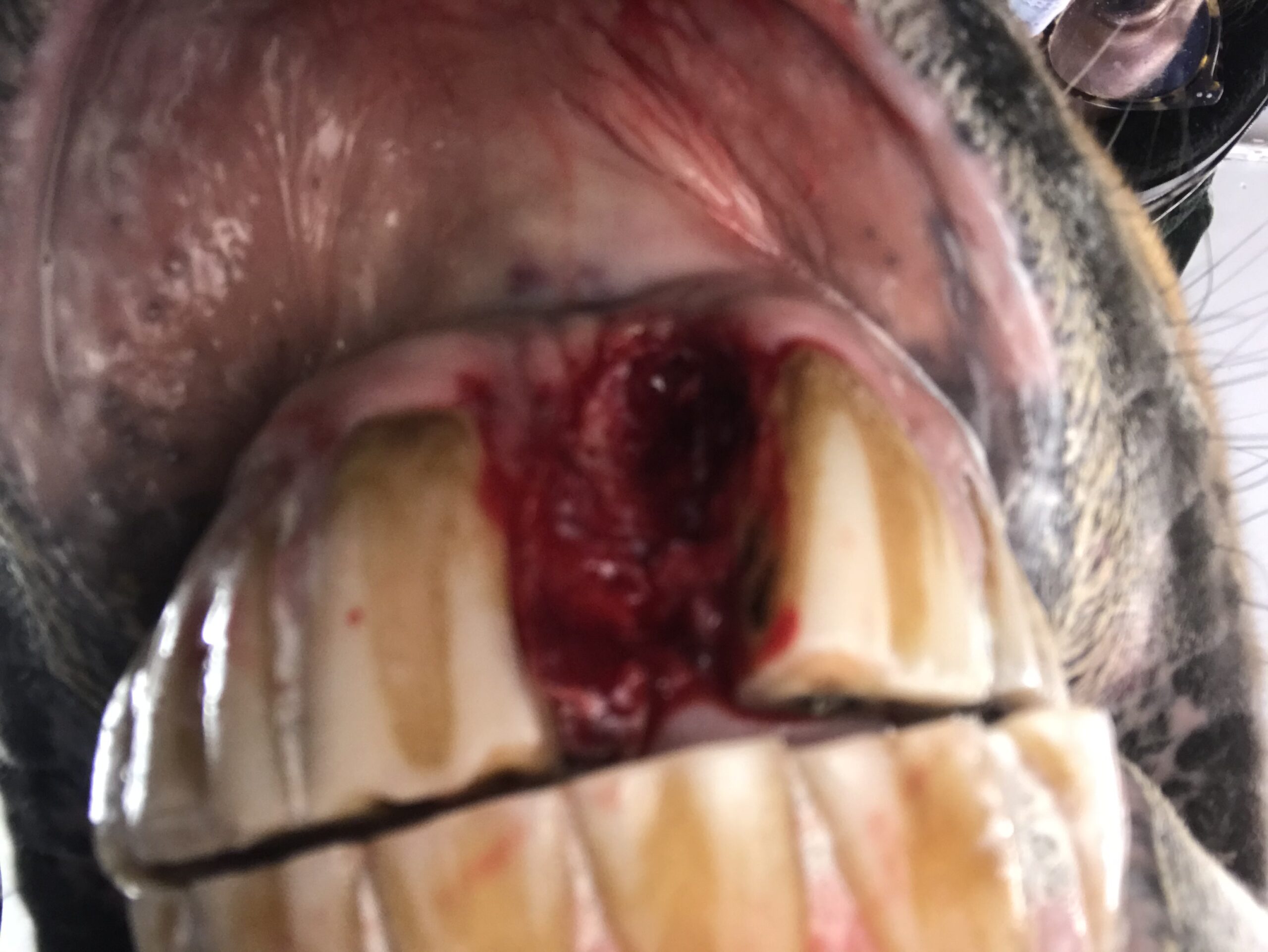
A horse adapts how they eat after extractions, using its lips for tearing through the grass or pulling hay. In most cases, a horse’s attitude and appetite will improve hugely after affected teeth are removed.
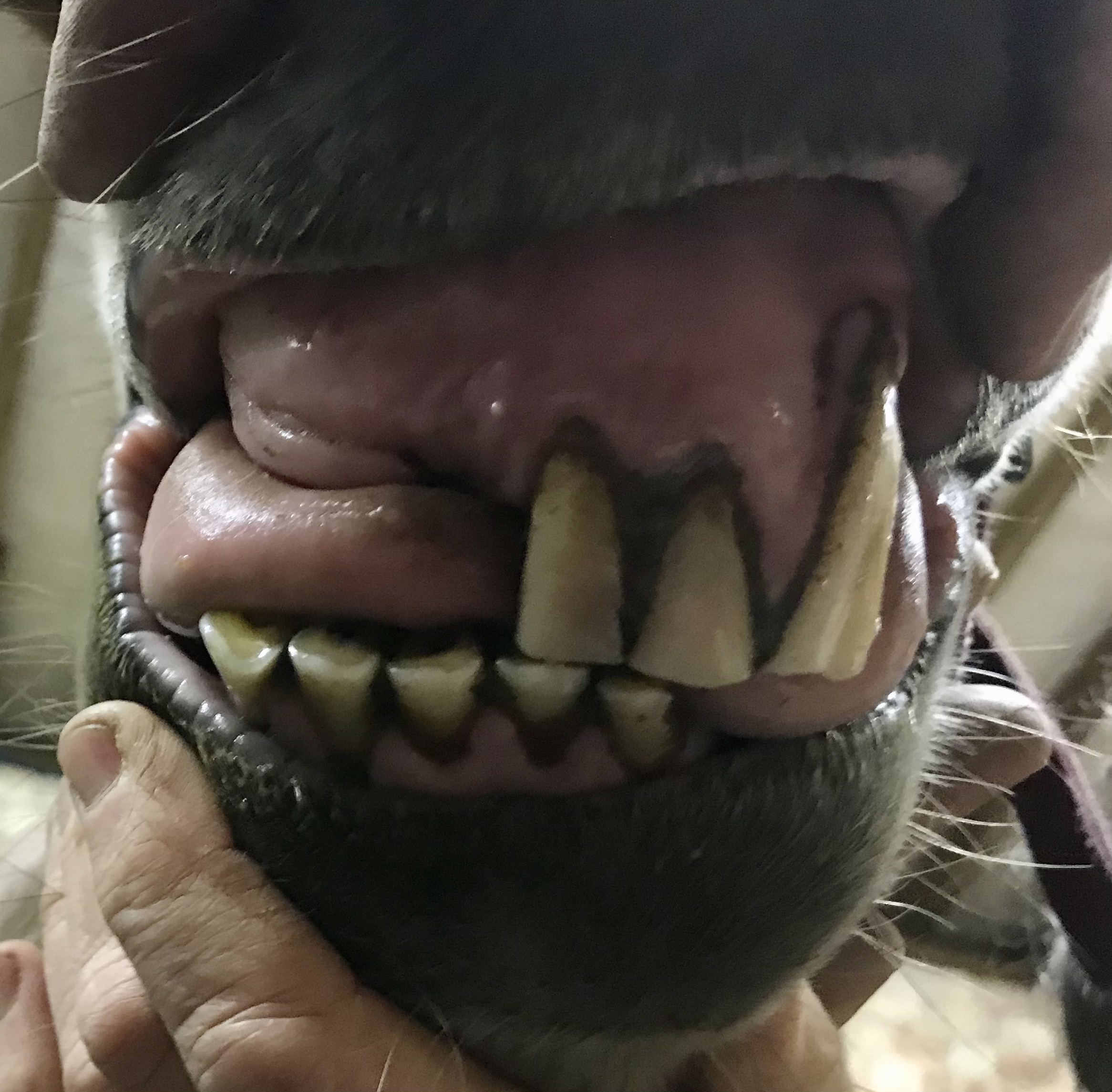
Gum heals very well after 3 extractions… Sadly more may be necessary
Please feel free to ask Deben Valley Equine for more information or arrange to have your horse’s mouth examined. Call 01728 685 123.
MARCH 2021
